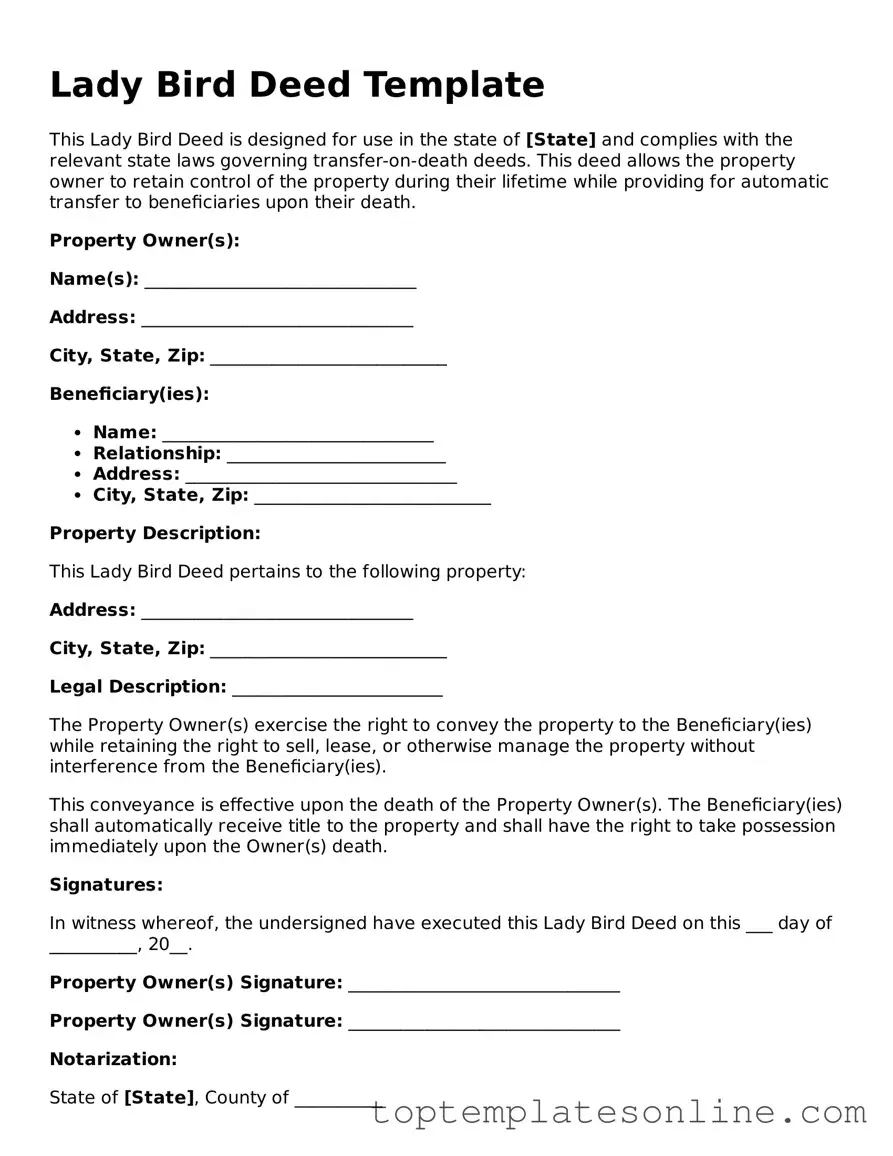Attorney-Approved Lady Bird Deed Form
The Lady Bird Deed is a legal document that allows property owners to transfer their real estate to beneficiaries while retaining the right to live in and control the property during their lifetime. This form can simplify the transfer process, avoiding probate and ensuring a smoother transition for heirs. Understanding its benefits and implications is essential for effective estate planning.
Customize Lady Bird Deed Here
